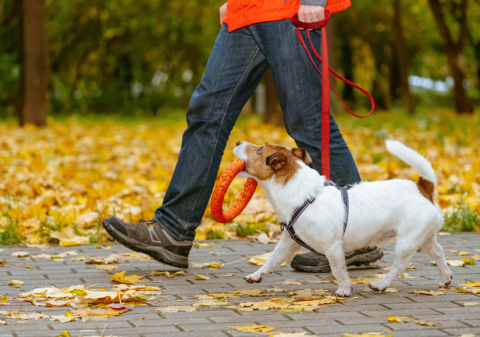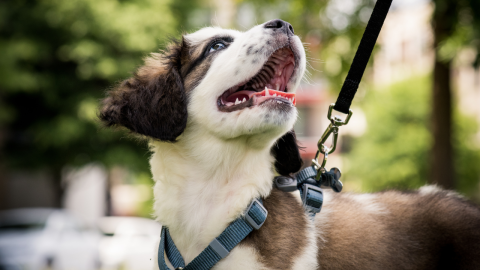
Published on February 14 by Julia
Walking your dog should be an enjoyable experience for both of you. Loose leash walking—where your dog walks calmly beside you without pulling—can make walks more relaxing, but it also requires patience and consistent training. Is this walking style right for you and your pup? Let’s explore the pros and cons of loose leash walking.
Loose leash walking means your dog walks near you on a relaxed leash without pulling, lunging, or lagging behind. It differs from heel walking, where the dog must stay precisely at your side. Instead, loose leash walking allows for some movement while maintaining a comfortable and controlled pace.
When your dog isn't constantly pulling, walks become less stressful and more enjoyable. You won’t have to struggle to keep control, allowing for a relaxed and peaceful experience.
Loose leash walking encourages your dog to pay attention to you rather than pulling ahead. This strengthens your bond, improves obedience, and reinforces your role as the leader.
A dog that pulls on the leash can cause injuries, including shoulder or wrist strain for the handler and neck or trachea damage for the dog. Loose leash walking reduces the risk of injury for both of you.
Since your dog isn’t restricted to a strict heel position, they can sniff, observe, and explore their surroundings, which provides important mental stimulation and enrichment.
If you want to train your dog for off-leash reliability, loose leash walking is an important first step. It teaches them to stay near you without constant tension on the leash.

Teaching loose leash walking requires consistent training, patience, and reinforcement. Some dogs may take longer to learn, especially those with a strong pulling instinct.
In crowded areas or near traffic, a stricter walking style (such as heeling) may be safer. A loose leash might not provide enough control in high-risk environments.
Some dogs, especially strong, excitable, or working breeds, naturally want to pull. Training them to walk on a loose leash can be more challenging and may require additional tools like a front-clip harness or professional training.
You need to stay engaged and aware of your dog’s behavior. If they get too excited or distracted, they might suddenly pull or lunge, requiring quick corrections.

Loose leash walking is a great skill for most dogs and owners, leading to more enjoyable walks and better communication. However, it requires time, patience, and consistent reinforcement. If your dog struggles with pulling, consider using positive reinforcement techniques and tools like treats, clickers, or front-clip harnesses to make training easier.
By investing in loose leash training, you can turn daily walks into a stress-free, bonding experience that benefits both you and your dog! 🐕🚶♂️
Discover More Content





